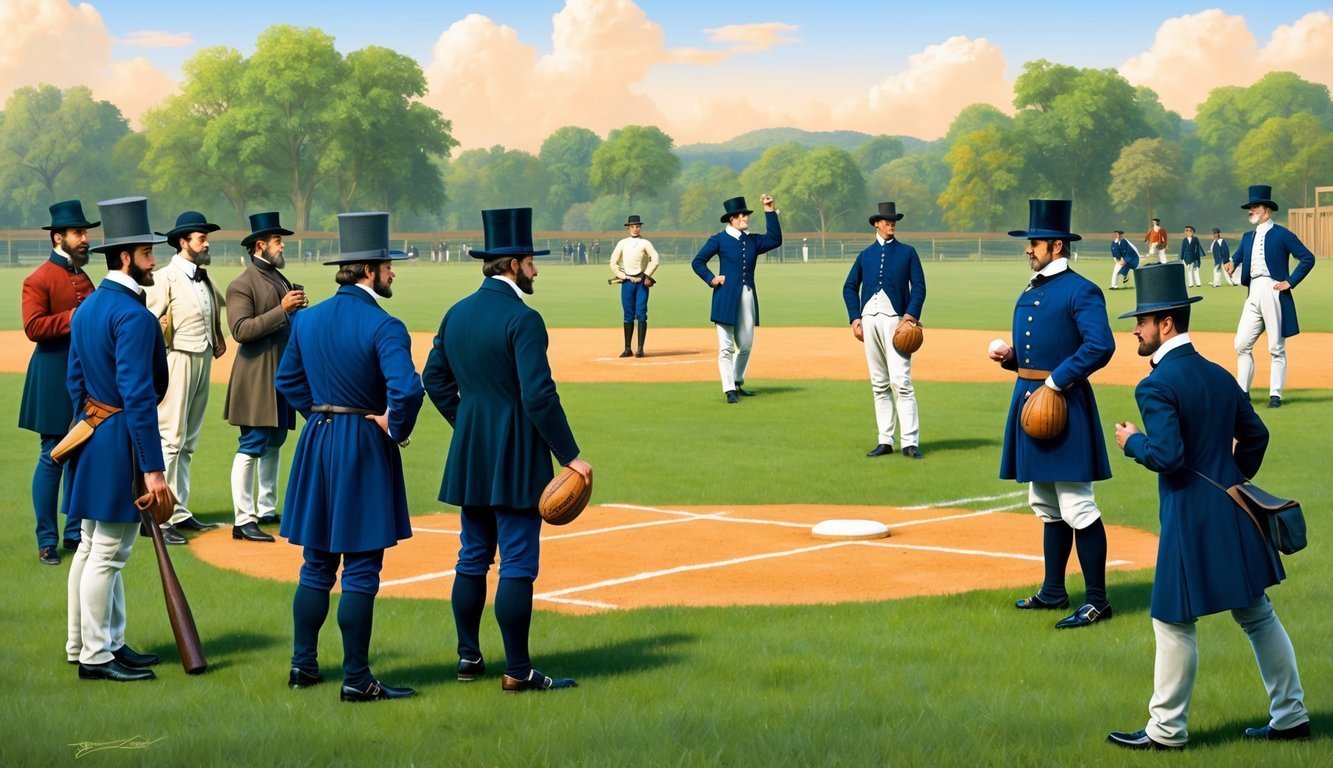Baseball’s journey from informal games to organized clubs marks a fascinating chapter in American sports history.
In the early 19th century, boys and amateur enthusiasts played baseball-like games with homemade equipment and loosely defined rules.
As interest grew, the first amateur men’s baseball clubs formed in the 1830s and 1840s.
The New York Knickerbocker Baseball Club formed in 1845.
This club laid the groundwork for others to follow, and soon baseball clubs began popping up across the northeastern United States.
These early clubs were often social organizations as much as athletic ones, bringing together men from similar backgrounds to enjoy camaraderie and friendly competition.
By the 1860s, semi-professional clubs emerged, signaling baseball’s transition from a casual pastime to a more serious pursuit.
This evolution set the stage for the formation of professional leagues in the decades to come, including the National League in 1876 and the American League in 1901.
These developments cemented baseball’s place as America’s pastime and laid the foundation for the sport we know and love today.
The Inception of Baseball

Baseball emerged from earlier bat-and-ball games, evolving into a distinct sport in the mid-19th century.
Key figures and organizations played crucial roles in shaping the game’s early rules and structure.
The Evolution from Pastimes to Baseball
Baseball’s roots trace back to English games like rounders and town ball.
These pastimes spread to North America, where they underwent modifications.
Local variations emerged across different regions.
In the 1830s and 1840s, informal clubs began organizing games with more consistent rules.
These early matches laid the groundwork for baseball’s formalization.
The sport gained popularity in New York City and surrounding areas.
Urban green spaces provided ideal venues for matches.
As interest grew, so did the need for standardized play.
Key Figures in Early Baseball
Alexander Cartwright stands out as a pivotal figure in baseball’s development.
He helped found the New York Knickerbocker Base Ball Club in 1845.
This organization became instrumental in codifying the sport’s rules.
Cartwright and his fellow Knickerbockers drafted the “Knickerbocker Rules” in September 1845.
These guidelines formed the basis of modern baseball.
They introduced concepts like foul territory and three-strike outs.
On June 19, 1846, the Knickerbockers played the New York Base Ball Club in Hoboken, New Jersey.
This match is often cited as the first official baseball game under the new rules.
Formation of Early Clubs and Leagues
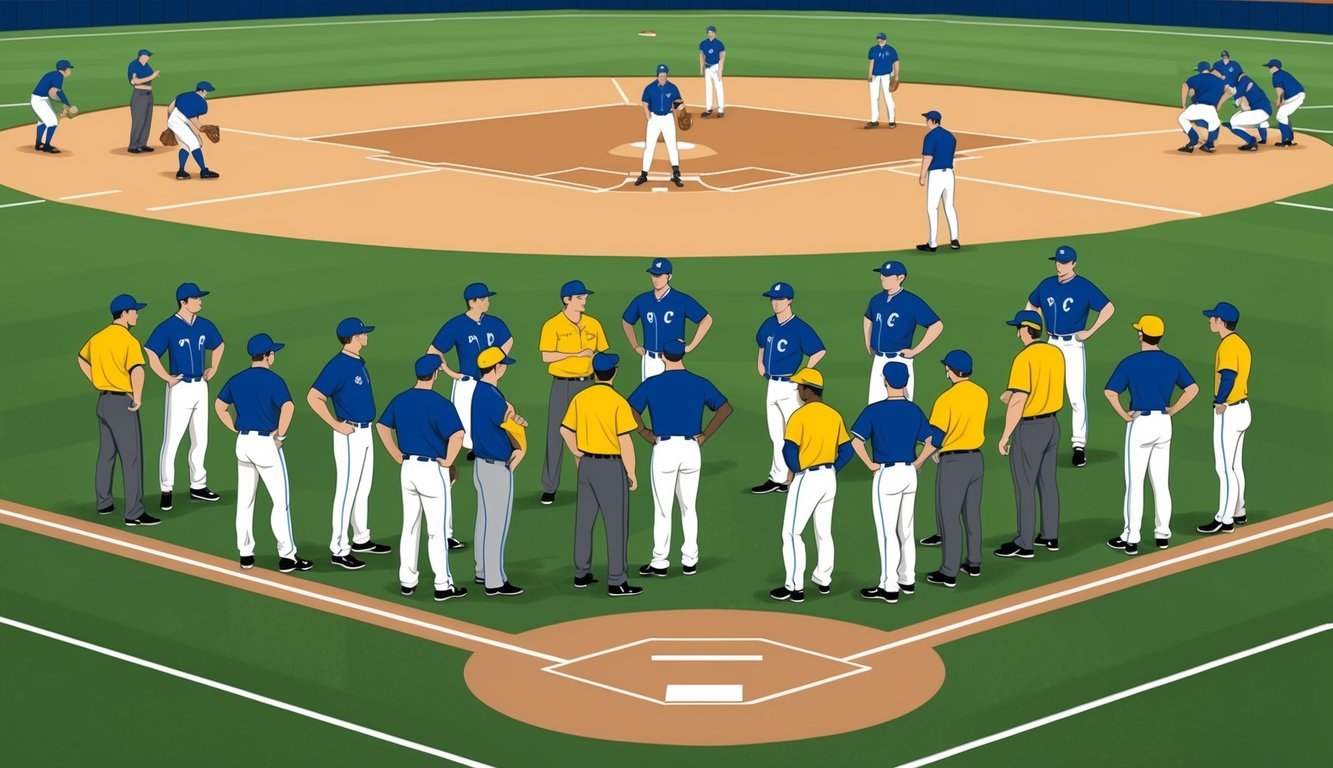
Baseball’s evolution from informal gatherings to organized competition led to the creation of the first clubs and leagues.
This period saw the emergence of structured teams and the establishment of governing bodies that would shape the sport’s future.
Organizing the First Teams
The mid-19th century witnessed the birth of formal baseball clubs.
In 1845, the New York Knickerbocker Base Ball Club formed, creating a set of rules that laid the foundation for modern baseball.
Other clubs soon followed, like the Brooklyn Atlantics and New York Mutuals.
These early teams often consisted of amateur players from similar social backgrounds.
They played on open fields and organized matches against rival clubs.
The Cincinnati Red Stockings made history in 1869 by becoming the first fully professional team, paying all their players.
The National Association and Beyond
In 1871, the National Association of Professional Base Ball Players formed, marking the first attempt at a professional league.
It included teams like the Boston Red Stockings and Philadelphia Athletics.
However, the association faced challenges with weak organization and financial instability.
Recognizing these issues, William Hulbert led the creation of the National League of Professional Base Ball Clubs in 1876.
This new league emphasized structure and financial stability.
It included eight charter teams, such as the Chicago White Stockings (now Cubs) and Boston Red Caps (now Braves).
The American Association emerged in 1882 as a rival to the National League.
It offered cheaper tickets and allowed alcohol sales at games.
These two leagues eventually merged, forming the foundation of Major League Baseball.
Rules, Gameplay, and the Diamond
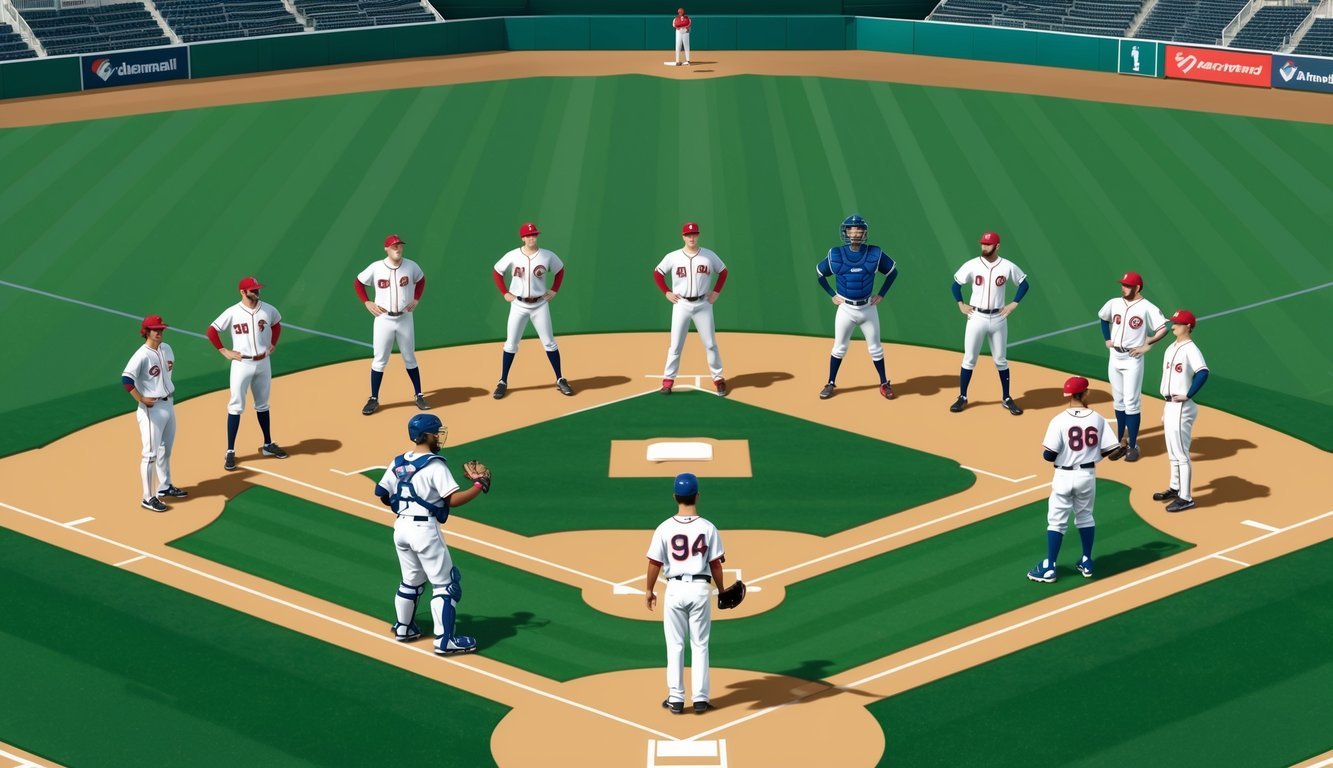
The evolution of baseball’s rules, gameplay, and field layout shaped the sport we know today.
These elements transformed a loosely organized pastime into America’s national game.
Throughout the years, various changes, from the introduction of the designated hitter to the establishment of the World Series, have reflected the growing complexity and popularity of the game.
Moreover, baseball’s role in wartime America became pivotal, providing both a source of entertainment and a sense of normalcy during times of conflict.
As soldiers fought overseas, the sport served as a unifying force, inspiring hope and fostering patriotism among the home front.
The Development of Modern Rules
The Knickerbocker Rules, established in 1845, laid the groundwork for modern baseball.
These 20 guidelines covered field layout, gameplay, scoring, and sportsmanship.
They introduced the concept of three strikes and outs, as well as foul balls.
As the game grew in popularity, rules continued to evolve.
The formation of professional leagues in the late 1800s brought further refinements.
The National League and American Association competed to attract fans, leading to innovations in gameplay.
Key changes included standardizing the number of innings to nine and refining regulations around bats and balls.
These adjustments helped create a more consistent and exciting game for players and spectators alike.
The Birth of the Baseball Diamond
The iconic diamond-shaped infield became a defining feature of baseball fields.
Early games were often played on irregularly shaped grounds, but the Knickerbocker Rules helped standardize the layout.
The diamond design placed bases 90 feet apart, creating perfect symmetry.
This spacing proved ideal for the pace of the game, allowing for exciting plays at each base.
In 1894, a more precise diagram of the baseball diamond appeared in the Spalding guide.
It included labeled points and angles, further refining the field’s geometry.
This mathematical approach ensured consistency across ballparks.
The outfield’s dimensions varied by location, adding unique character to each park.
This blend of standardized infield and varied outfield became a hallmark of baseball fields everywhere.
The Expansion of Baseball
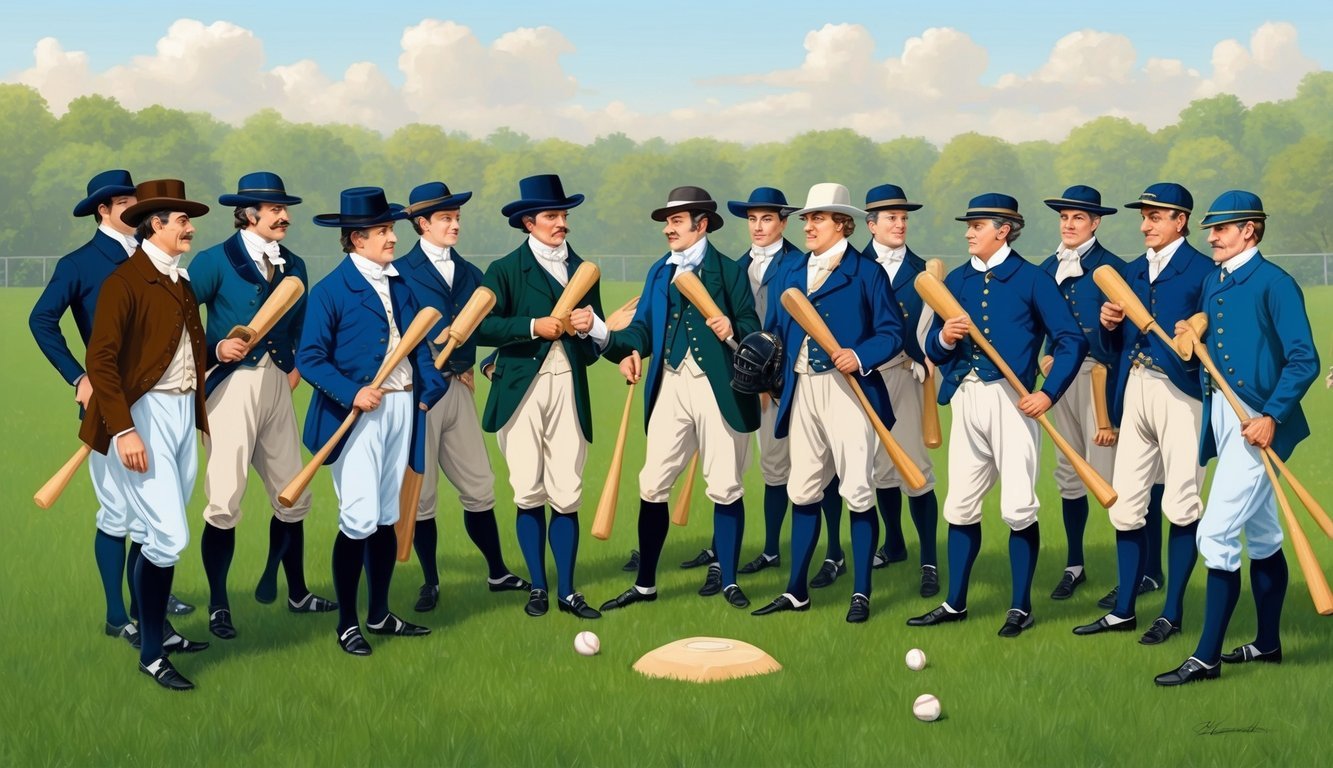
Baseball’s reach grew dramatically from its origins in the Northeast.
The sport spread across North America and beyond, transforming from a regional pastime into a global phenomenon.
Going National and Westward
Baseball’s expansion westward began in earnest with the formation of the National League in 1876.
This marked a shift from regional leagues to a more unified national structure.
Cities like Milwaukee and Detroit joined the baseball landscape, broadening the sport’s fanbase.
The creation of the American League in 1901 further accelerated expansion.
This new league challenged the National League’s monopoly, leading to the first World Series in 1903.
The rivalry between leagues drove growth and excitement.
As populations shifted westward, so did baseball.
Teams moved to California, bringing Major League action to the Pacific coast.
This opened up new markets and fanbase opportunities.
International Growth of Baseball
Baseball’s influence soon extended beyond U.S. borders.
Cuba embraced the sport early on, with professional leagues established by the late 19th century.
The island nation became a hotbed of talent, producing many future MLB stars.
Japan fell in love with baseball after it was introduced in the 1870s.
The sport took root quickly, leading to the formation of professional leagues in the 1930s.
Today, Japanese baseball enjoys immense popularity and has produced numerous MLB players.
Other countries like South Korea, Taiwan, and parts of Latin America developed strong baseball cultures.
International tournaments and the World Baseball Classic have further globalized the sport, showcasing talent from around the world.
Era of Change and Integration
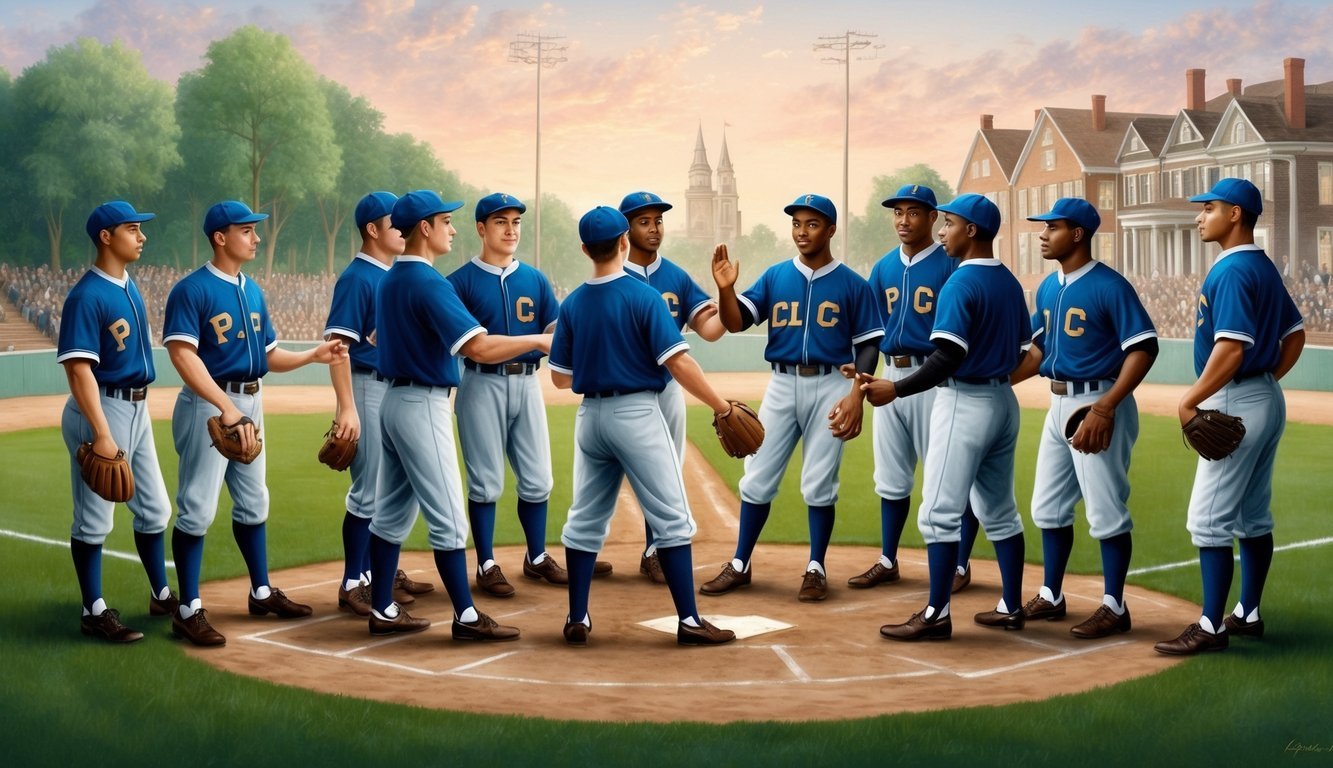
Baseball underwent a profound transformation in the mid-20th century.
The sport’s integration reshaped team dynamics and reflected broader societal shifts.
Barriers in Baseball
For decades, baseball’s color barrier excluded talented Black players from the major leagues.
This segregation mirrored the racial divisions prevalent in American society.
The Negro Leagues flourished during this time, showcasing the skills of African American athletes.
Babe Ruth‘s legendary career unfolded entirely within the segregated era.
His unprecedented home run totals and larger-than-life persona captivated fans, but the game he played wasn’t truly representative of all available talent.
The aftermath of World War II brought new scrutiny to racial inequalities.
Baseball executives began to recognize the untapped potential of integrating the sport.
Legends and Landmark Events
Jackie Robinson’s debut with the Brooklyn Dodgers on April 15, 1947, marked a watershed moment.
His courage in the face of intense pressure and discrimination paved the way for other Black players.
Robinson’s success on the field proved undeniable.
He won Rookie of the Year and helped lead the Dodgers to the World Series.
Other teams soon followed suit.
Later that same year, Larry Doby integrated the American League.
The Boston Red Sox became the last team to integrate in 1959, signaling the end of baseball’s formal color barrier.
This era of change made the major leagues more competitive and reflective of America’s diversity.
It set the stage for future stars like Willie Mays and Hank Aaron to showcase their talents on baseball’s biggest stage.
